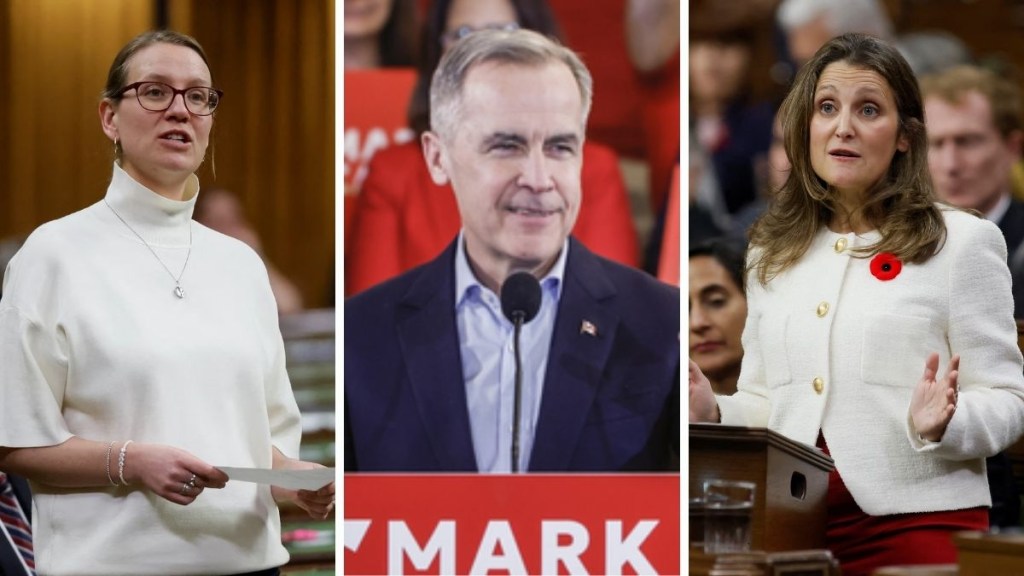Canada’s Liberal Party on Sunday will select a new leader to replace Justin Trudeau as prime minister and navigate the challenges posed by US President Donald Trump.
Trudeau, who has led the party since 2013 and became prime minister in 2015, announced his resignation in January following poor poll numbers and internal discord. His departure triggered a leadership race, with the winner set to assume the role of prime minister. Four candidates qualified for the race: Mark Carney, Chrystia Freeland, Karina Gould and Frank Baylis. However, Carney and Freeland are considered the main contenders.
Mark Carney, a former governor of the Bank of Canada and the first non-British governor of the Bank of England, is the front-runner. His main challenger, Chrystia Freeland, served as Trudeau’s finance minister before resigning in December with a critical letter that played a role in his decision to step down.
Both candidates have emphasised their plans to address the perceived threats posed by Trump’s policies. The new leader will be chosen through a secret vote by approximately 140,000 party members, with the result to be announced on Sunday. The new prime minister is expected to call an election soon, or opposition parties may force one through a no-confidence vote this month.
Top candidates who could succeed Justin Trudeau as Canada’s Next Prime Minister
Mark Carney
At 59, Carney is the leading candidate to take over as Canada’s prime minister. A former Goldman Sachs banker, Carney has garnered significant support from Liberal members, including much of Trudeau’s cabinet, positioning himself as the best choice to guide the country through its current crisis, the potential threat of a US-led trade war under Trump.
Carney is respected for his experience in economic crises. As governor of the Bank of Canada, he played a critical role in steering the country through the 2008 financial crisis. Later, as the first non-British governor of the Bank of England, he earned praise for his leadership during economic challenges.
Polls suggest Carney is trusted most to manage Canada’s economic concerns and relations with Trump. If elected, he would immediately become prime minister and would likely have to decide when to call the next federal election. While an election is scheduled for October, Carney could choose to call a snap election earlier, particularly given the rising concerns over US tariffs and trade tensions.
Chrystia Freeland
Freeland, the former deputy prime minister, is the second major contender in the race. After Trudeau informed her in December that he no longer wanted her as finance minister, she resigned and released a harshly critical letter. Her resignation played a role in Trudeau stepping down.
According to political expert Nelson Wiseman, Freeland’s close association with the unpopular Trudeau, Carney’s strong support from Liberal MPs, and the looming threat of Trump’s tariffs have made Carney the favorite. Freeland has campaigned on her success in dealing with Trump, particularly her role in negotiating the new North American trade agreement. Carney, however, has emphasized his broader crisis-management experience and warned that Trump’s current approach presents new challenges.
Karina Gould
Gould is the youngest woman to serve as a Canadian minister and has positioned herself as a voice for a “generational shift” in Canadian politics. She has called for the Liberal Party to embrace this change. Gould has proposed raising corporate taxes on companies earning more than $500 million annually to encourage reinvestment or face higher tax rates.
If elected, Gould’s top priority would be resolving Canada’s trade dispute with the US before calling a general election. Like her rivals, she has taken a strong stance against Trump’s policies.
Frank Baylis
Baylis, a businessman and former lawmaker from Montreal, served in Parliament from 2015 to 2019. He proposed developing two natural gas pipelines to transport gas to Europe and Asia, aiming to reduce Canada’s dependence on the US. Baylis advocates for diversifying Canada’s trade relationships to prevent over-reliance on a single country.

